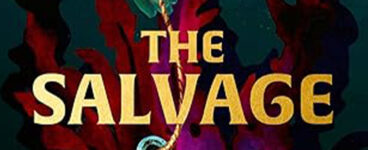‘Described as a “silver thread in a ribbon of green”, the 11 km stretch of the walkway from Colinton to Leith is diverse and enjoyable, mostly following a tranquil riverside path with occasional dips into city streets.’
Who says you have to go out to the wilds of the country to see Scotland’s fantastic wildlife? Not Keith Broomfield in his latest book, Wild Edinburgh, a guide to nature spotting in Scotland’s capital city. We asked him to name is five favourite spots in Edinburgh to spot wildlife.
Wild Edinburgh: An Illustrated Guide to the City’s Wildlife
By Keith Broomfield
Published by Tippermuir Books
- Wardie Bay
Bounded by Newhaven Harbour and Leith Docks to the east and Granton Pier on the western flank, Wardie Bay is rich in all kinds of wildlife. Look out for sea ducks such as goldeneye, eider and long-tailed duck in autumn and winter, whilst summer is often productive for spotting common and sandwich terns fishing for sprats and sandeels. At low spring tides, a treasure trove of rockpool creatures are waiting to be discovered, including fish such as shanny, butterfish, and long-spined sea scorpion. By gently lifting large stones, fragile starfish-like brittlestars may be found, as well as green shore crabs and porcelain crabs – but always place the stones carefully back into their original position.


- Holyrood Park
The jewel in the crown for Edinburgh’s wildlife, Holyrood Park and Arthur’s Seat is home to many scarce and unusual plants, mosses and lichens within its 260 hectares, which makes it a botanist’s dream. Rarities included sticky catchfly, which was the favourite flower of King James VI of Scotland and became the official floral emblem of the Scottish capital. The wealth of wildflowers means Holyrood Park is unusually prolific in butterflies – 26 species have been recorded, which is an impressive figure, given there are around 35 species in total found in Scotland. Among those that occur are northern brown argus, wall and grayling – all of which are classed as nationally rare. Other species include common blue, holly blue and small copper.


- Water of Leith
Described as a ‘silver thread in a ribbon of green’, the 11 km stretch of the walkway from Colinton to Leith is diverse and enjoyable, mostly following a tranquil riverside path with occasional dips into city streets. Kingfishers, dippers, grey wagtails, goosanders, mallards, grey herons and moorhens can all be encountered, as well as elusive otters. The woodland at Colinton and Craiglockhart Dells are expansive, comprising a wide variety of trees, including ash, lime, elm, birch, willow and hawthorn, along with oak, yew, holly, hornbeam, sweet chestnut and beech.


- Corstorphine Hill
The large woodland of Corstorphine Hill dominates the skyline of western Edinburgh, a rich ridge of verdant growth that runs from Clermiston to Ravelston. The hill is home to over 100 species of wildflower (including grasses), some of which are rare and unusual, including moschatel, climbing corydalis, little balsam and blue sow-thistle. The star attraction for wildlife enthusiasts is the healthy population of badgers, which are often glimpsed at dusk and dawn. One intriguing inhabitant of the woodland is the Natterer’s bat, a relatively scarce animal in Scotland.

- Newington and Warriston Cemeteries
Founded in Victorian times, Newington and Warriston Cemeteries are both humbling and inspiring in equal measure, with each gravestone having a story to tell, often of young men cut down in their prime during the First and Second World Wars. These cemeteries are now wonderful natural mausoleums, particularly characterised by imposing trees, including large-leaved lime, common lime, horse chestnut, Norway maple, gean (wild cherry), laburnum, walnut, wych elm, hornbeam and ash. The trees and open glades attract many songbirds such as blackbirds, song thrushes, willow warblers and blackcaps, which in turn are preyed upon by sparrowhawks. Once the sun has set, the night shift moves into action, including tawny owls, foxes and badgers.

Wild Edinburgh: An Illustrated Guide to the City’s Wildlife by Keith Broomfield is published by Tippermuir Books, priced £11.99.
ALSO IN THIS ISSUE

 Bookseller Gift Ideas
Bookseller Gift Ideas
‘A stunning debut novel. I devoured this book and fell in love with Cora the main character.’

 The Salvage by Anbara Salam
The Salvage by Anbara Salam
‘The first dive into a ship is an otherworldly experience. It’s travelling into a moment that has be …













